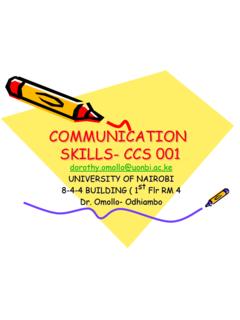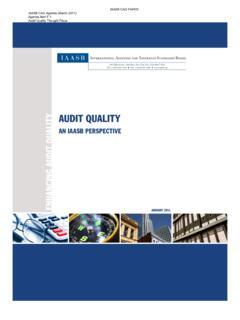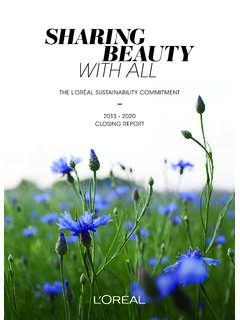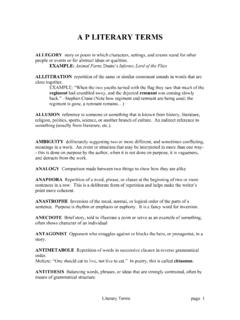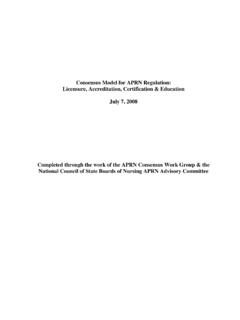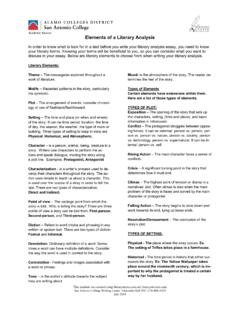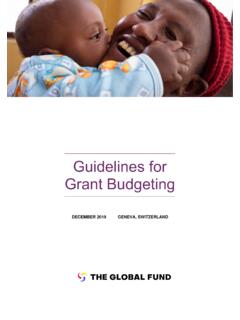Transcription of Transmission of SARS-CoV-2 and Mitigating Measures
1 Transmission of SARS-CoV-2 and Mitigating Measures EMG-SAGE 4th June 2020 Executive summary Transmission of SARS-CoV-2 is most strongly associated with close and prolonged contact in indoor environments. The highest risks of Transmission are in crowded spaces over extended periods (high confidence). Physical distancing is an important mitigation measure (high confidence). Where a situation means that 2m face-to-face distancing cannot be achieved it is strongly recommended that additional mitigation Measures including (but not limited to) face coverings and minimising duration of exposure are adopted (medium confidence). Selection of prevention and mitigation Measures should consider all the potential Transmission routes and need to be bespoke to a setting and the activities carried out (high confidence). Key conclusions 1. We consider the following: Evidence relating to Transmission of COVID-19 as at 3rd June 2020; The potential effectiveness of a range of different prevention and mitigation Measures , and the factors that will determine this; Selecting Measures to effectively control all the Transmission mechanisms for the disease; How Measures in the UK compare to other countries; 2.
2 Understanding Transmission : Transmission of SARS-CoV-2 is most strongly associated with close and prolonged contact, suggesting that close-range direct person-to-person Transmission (droplets) and indirect contact Transmission (via surfaces and objects) are the most important routes of Transmission . There is weak evidence that aerosol Transmission may play a role under some conditions such as in poorly ventilated crowded environments. This evidence is predominately from one outbreak investigation. Laboratory bio-aerosol experiments show that SARS-CoV-2 can survive in the aerosol state for over 1 hour. There is evidence for asymptomatic Transmission and weak but evolving evidence for super-spreading events where a small number of people infect large numbers of others. Given that these people may be asymptomatic (and thus not coughing or sneezing) it is possible that they are able to disperse large amounts of virus through normal respiratory activities.
3 3. The role of physical distancing: There is a non-linear relation between the risk of Transmission and distance of separation for face-to-face contact. Duration of this contact is also important with risk proportional to time. Given the uncertainties about Transmission and dose-response it is not possible to say with certainty what a safe distance of separation is, but best current evidence suggests that 1m carries between 2 and 10 times the risk of 2m of separation. Where it is necessary for people to be closer than 2m face-to-face for a prolonged period or where someone has multiple frequent interactions with others at shorter distance, additional Measures will be required to disrupt close-range Transmission . In most cases this is likely to be based on limiting duration of contact, using face coverings and orientation of people. Countries that specify a separation distance below 2m generally mandate other mitigation Measures , usually face masks or face coverings as a minimum.
4 The exception is Australia which recommends and does not mandate face coverings but, this is in the context of very low disease prevalence. Outdoor Transmission remains low risk through aerosol and indirect contact routes, but face-to-face exposure ( 2m for a prolonged period) should still be considered a potential risk for Transmission via respiratory droplets. 4. Prevention and mitigation Measures : Selecting prevention and mitigation Measures should use a hierarchy of control approach as described in the EMG paper [C]. It is important to ensure that Measures are in place to cover all the Transmission routes, and groups of Measures are likely to be needed to ensure this is achieved. Graphical methods may be beneficial to help organisations visualise the impacts and interactions of different Measures . Evidence relating to hand-hygiene and face coverings includes a number of randomised trials and meta-analyses.
5 A recent meta-analysis study has also considered the role of distance in Transmission and is consistent with our analysis around this measure . Given the very recent origin of this novel virus, very few engineering or environmental mitigation Measures have strong evidence to support their effectiveness. A number have data from idealised studies to show theoretical efficacy, but there are very few real-world studies. Decisions on selection of engineering controls will inevitably need to be based on incomplete evidence as do nothing is not an option. Appropriate controls should be identified through collaborative risk assessments carried out between employers and employees. Overview of modes of Transmission 5. Transmission is still thought to occur through three main mechanisms as illustrated in Figure 1: Close-range direct person-to-person Transmission happens when someone is directly exposed to the respiratory droplets emitted by another person.
6 These virus carrying droplets and aerosols can lead to virus entering the body through eyes, nasal membranes, oral mucosa, or the respiratory system. Close range Transmission can also be through direct physical contact with the infectious person. indirect surface contact Transmission happens when someone touches a surface that has been contaminated with the virus. They may then become infected when they touch their nose, eyes or mouth with a contaminated hand or object (fomite). Surfaces can be contaminated through the deposition of respiratory droplets and by people who are infectious touching surfaces with their hands. Aerosol Transmission occurs when small virus containing respiratory droplets evaporate to less than 5 micron diameter particles (droplet nuclei) and are carried by the air, where they are subsequently inhaled. This may be released from respiratory actions (breathing, talking, coughing etc) as well as through aerosol generating procedures in a hospital or dental environment.
7 These particles principally transit infection over short distances but potentially could transmit over longer distances (<2m) too. Figure 1: Illustration of the Transmission routes for COVID-19 (image adapted from [1] and [2] 6. Infection requires inoculation by sufficient number of viral particles to cause infection the number of particles required to cause infection is not yet known. However, the infectious dose received depends on the quantity of infectious virus x the duration of exposure, and hence both must be considered when evaluating risk. 7. Risk of Transmission depends on a number of factors. These have been set out in previous EMG papers [A,B,C], but the key factors are reiterated here for clarity: The highest risk for close-range Transmission is when someone is face-to-face with an infectious person at a distance of 2m or less for a prolonged period. The risk increases with the amount of time spent in close proximity to the infectious person and with the reduction of distance.)
8 A calculation based on [3] suggests risk at 2m face-to-face is around 10 times lower than the risk at 1m. A new meta-analysis paper of reported Transmission suggests that the risk of Transmission at 2m separation is approximately half that at 1m, although this does not consider the orientation or the mode of Transmission [4]. When people are side-to-side or behind one another risk is via aerosols and so is determined by the influence of ventilation; at 1m the exposure risks would be similar to 2m when face-to-face in an indoor environment Risk of contact Transmission increases with the proximity to the infectious person (surfaces close by are more likely to be contaminated), the number of surfaces touched, virus survival on hands and surfaces, and higher frequency face touching behaviour. Frequent cleaning of hand touch surfaces and good hand hygiene reduce risk. Virus is not likely to survive for long periods of time on outdoor surfaces in sunlight, but may survive for more than 24 hours in indoor environments.
9 Risk of aerosol Transmission is highest when people share poorly ventilated spaces where the viral aerosols can build up rather than being diluted and removed by the ventilation. Risk increases with time spent in the same shared air. Risk is generally higher closer to the infectious person, but beyond this close proximity the concentration of aerosols that a susceptible person will be exposed to depends on the ventilation in the room. Transmission by aerosol can happen at distances beyond 2m in the same enclosed space especially if the ventilation is poor and duration of exposure is sufficient. It is possible but unlikely that aerosol Transmission can happen between people in different rooms (via ventilation systems). Aerosol Transmission risk is considered to be very low outdoors due to high dilution of virus carrying aerosols and UV inactivation of the virus. The amount of virus released by an infected person and its dispersion characteristics facilitates the Transmission .
10 Dispersion is governed by complex flow physics as described in previous EMG papers[A,B]. Key factors include the type of respiratory activity (a sneeze generates the most particles, breathing and talking produce less), the velocity of the release (a cough or a sneeze is more violent than breathing or talking and hence the droplets can travel further and with higher momentum). Virus could also be introduced via nasal discharge through contamination on hands. The point at which the exposure occurs in the disease progression of the infected individual may also be important. There is evidence that viral shedding depends on the progression of the disease and may be highest the day prior to symptom onset [5]. No viable virus has been recovered from air samples taken in hospitals from patients who generally are at a more advanced stage of infection. Viral RNA has only been recovered occasionally at low levels, although one study suggests it is higher for patients in the first week of illness [6].










